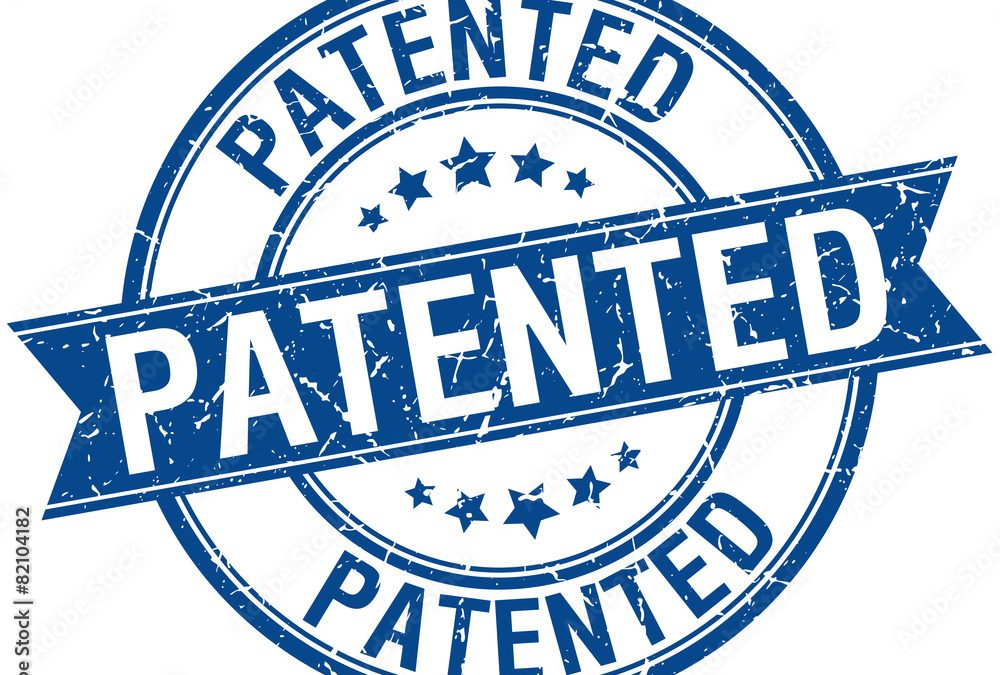
by senhaonline | May 19, 2023 | Sem categoria
by Janice Kelland
Recent amendments to the Canadian Patent Rules which will affect the cost of examining patent applications in Canada have just been registered and will be in effect before the end of the year.
These requirements can be avoided if a request for examination is filed before October 3, 2022.
Excess claims fees will be required:
when examination is requested:
Effective October 3, 2022, if a patent application has more than 20 claims when examination is requested, an additional government fee of $100 CAD per additional claim must be paid. For example, if an application has 25 claims when examination is requested, the government examination fee will be increased by $500. A 50% reduction of this fee (to $50 CAD per additional claim) applies if small entity fees are paid for the application.
A voluntary amendment can be filed at the time examination is requested to reduce the number of claims for which excess claims fees must be paid.
when the final issuance fee is paid:
As well, if more claims than were paid for at the time examination was requested are added to the application at any time before the application is allowed, even if they are deleted before allowance, excess claims fees to pay for the further added claims will be included in the final fee which must be paid for grant of the patent. Fees are due for claims which add to the total number of claims on file at any one time, not for claims which simply replace deleted claims without increasing the total number.
Examples of calculations are summarized below:
| No. of claims in application when examination requested |
Additional examination fee for excess claims |
Max. no. of claims presented at any time during examination |
No. of claims in application at allowance |
Additional final fee for excess claims |
| 20 or fewer |
$0 |
20 + x |
20 + x or fewer |
$100x ($50x) |
| 20 + x |
$100x ($50x) |
20 + x |
20 + x or fewer |
$0 |
| 20 + x |
$100x ($50x) |
20 + x + y |
20 + x + y or fewer |
$100y ($50y) |
Requests for continued examination will be required if more than two office actions are issued
A further new requirement coming into effect on October 3, 2022 is related to the number of examination reports issued by the Examiner during examination of the patent application.
If the examiner issues a third report identifying defects in the application that need to be addressed before the patent can be granted, a request for continued examination (RCE) will need to be submitted along with payment of a government fee of over $800 CAD. Again, a 50% reduction of this fee applies if small entity fees are paid for the application.
If a further two examiner’s reports are issued after a request for continued examination has been filed, a further RCE must be filed along with payment of an additional government fee. Issuance of examiner’s reports and filing of requests for continued examination can continue until the application is allowed, finally refused or abandoned.
If you wish to proactively file a request for examination for one or more applications before October 3, 2022 to prevent these additional government fees being applied, or if you have any questions or would like more information, please contact us – we are happy to help.
Download a PDF version of this notice.
by Janice Kelland

by senhaonline | May 19, 2023 | Sem categoria
The Partners, Associates and Staff at Moffat & Co. wish to offer their congratulations to Rebecca Huang on her recent call to the Bar. Rebecca completed her articles with our sister firm Macera & Jarzyna LLP this spring and is now a freshly minted Barrister & Solicitor and member of the Law Society of Ontario. Congratulations Rebecca !!

by senhaonline | May 19, 2023 | Sem categoria
By Jerome Bastien
The Federal Court has recently issued a decision in the case of Benjamin Moore & Co. v. The Attorney General of Canada, 2022 FC 923. This case follows the Amazon decisions by the Federal Court and the Federal Court of Appeal, and the more recent Choueifaty decision, in articulating what the legal test for patent subject matter eligibility is in Canada.
At issue in the case were two patent applications by Benjamin Moore which were rejected by the Canadian Patent Office. The claims, directed to a computer-implemented colour selection method, were found by the Patent Office to not comply with section 2 of the Patent Act. In reaching this conclusion, the Patent Office analyzed the problem solved by the claims, found that the problem was not a computer-related problem, and therefore concluded that the computer was not a part of the solution.
Both the appellant (Benjamin Moore) and the respondent (the Attorney General), agreed that the Patent Office applied the “problem and solution approach”, which was previously rejected by the Federal Court. Moreover, the Federal Court noted that despite paying lip service to the purposive construction approach prescribed by earlier decisions, CIPO continued to apply the problem and solution approach.
As all parties agreed that the Patent Office had applied the wrong legal test, the only issue to be decided by the court was which legal test should CIPO apply. The respondent requested that the matter be remitted to the Patent Office with instructions to follow the Choueifaty decision as guidance. In contrast, the appellant sought an order instructing the Patent Office to follow a legal test proposed by the Intellectual Property Institute of Canada (IPIC), which was an intervener in the case.
The test proposed by IPIC is reminiscent of prong 2 of step 2A in the subject matter eligibility test used by the USPTO, as it asks whether the claimed subject matter comprises a practical application which uses an abstract idea or scientific theorem, or whether the claims are just directed to a mere abstract idea or scientific theorem.
In a victory for the appellant and the intervener, the court agreed to instruct CIPO to use the practical application test proposed by IPIC. The matter will be remitted to CIPO for evaluation in accordance with the court’s instructions.
However, it is too early to tell whether this victory will translate into CIPO adopting the approach prescribed by the courts or whether it will continue paying lip service to court decisions while still applying the “problem and solution approach”, as it has done following past decisions.
By Jerome Bastien

by senhaonline | May 19, 2023 | Sem categoria
By Jaimie Bordman
As copyright pirates continue to develop ever more complex ways to evade copyright enforcement, content owners must continually devise new ways of stopping them. In a recent decision, Canada’s Federal Court has provided content owners a significant new tool to use in their efforts to stop piracy.
Known as a Dynamic Site Blocking Order, the Order compels third party internet service providers (ISPs) to block access to internet sites as identified by the content owners from time to time, sometimes on very short notice. This type of Order differs from Static Site Blocking Orders, where the sites to be blocked are specifically identified in the Order, and the addition of new sites to be blocked requires Court intervention to amend the Order.
While Static Site Blocking Orders have been issued by Canadian courts before, this is the first time that a Canadian court has issued a Dynamic Site Blocking Order.
The site blocking order was issued to the owners of the National Hockey League’s Stanley Cup Playoffs, to prevent unauthorized redistribution of the coverage by unidentified pirates. The unprecedented dynamic nature of the order was necessary because of the pirates’ advanced means of evading detection, which included frequently relocating the illegal feed to new internet sites, sometimes several times per game. Due to the nature of the copyright works as a live broadcast, the owners required the ability to quickly add new sites to the site blocking order; without this ability, they would effectively have no means of preventing unauthorized access to their content.
The Order was opposed by several of the ISPs that will be required to block the sites under the Order. Several concerns were raised, including the possibility of inadvertently blocking access to legal content, and the cost of compliance with the order. For some ISPs, core network equipment would have to be upgraded in order to block sites as required, which would substantially add to the cost of compliance.
The Court was sympathetic to many of these concerns, and issued the Dynamic Site Blocking Order subject to several conditions, including the following:
- The content owner is required to retain a third party expert to monitor the owner’s use of the Order, and ensure that blocked sites are properly identified;
- No ISP will be required to upgrade equipment to comply with the Order;
- ISPs will be entitled to full reimbursement of their costs incurred to implement the Order. Reimbursement is capped at a maximum amount, but reasonable costs to implement the Order are not expected to exceed that cap.
Despite these strict conditions, the Court’s Dynamic Site Blocking Order establishes precedent in Canada for a powerful new tool for copyright owners to enforce their legal rights against pirates who go to great lengths to infringe.
The Court’s lengthy reasons for issuing the Order can be seen in Rogers Media Inc. et al. v. Doe 1 et al., 20220 FC 775.
By Jaimie Bordman

by senhaonline | May 19, 2023 | Sem categoria
By Jaimie Bordman
The length of the term of copyright protection in Canada is going up.
Canada’s budget implementation bill contains amendments to the Copyright Act that will extend the term of copyright. The new term length will be the life of the author, plus 70 years. This is up from the current term which extends for the life of the author plus 50 years.
Under a term of the United States-Mexico-Canada trade agreement (the “USMCA”), each party must provide under its laws copyright having a term of 70 years from the death of the author. The amendments to Canada’s Copyright Act will bring Canada into compliance with this term of the USMCA.
This change will have potentially significant implications for both copyright owners and users of content. If you have questions or concerns over how you or your business may be impacted, Moffat & Co. would like to help. Please contact us to more information.
Jaimie Bordman is an associate and litigation specialist with Moffat & Co.

by senhaonline | May 19, 2023 | Sem categoria
By Ashley Chu
The Canadian Intellectual Property Office (CIPO) recently published its first determinations regarding due care.
Since the amendments to the Patent Act and Patent Rules came into force on October 30, 2019, applicants and patentees have been required to show due care when:
• requesting reinstatement of an abandoned application due to failure to pay a maintenance fee and the late fee;
• requesting reinstatement of an abandoned application due to failure to request examination within 6 months of the deadline to request and failure to pay the late fee; and
• requesting reversal of the deemed expiry of a patent due to failure to pay a maintenance fee and the late fee.
In determining whether the failure occurred in spite of the due care required by the circumstances having been taken, the Commissioner of Patents (the “Commissioner”) considers whether the applicant/patentee took all measures that a reasonably prudent applicant/patentee would have taken in the circumstances to avoid the failure.
CIPO had previously provided some general circumstances in which the due care standard may be met (e.g., force majeure, unexpected illness, facsimile or software submission failure, docketing system error or isolated human error by assistant). But until now, applicants and patentees did not have any concrete examples of situations where the Commissioner had found that due care had been taken.
Three determinations have been published, all of which relate to a failure to pay maintenance fees due to an isolated human error. In one case, the missed maintenance fee payment was a result of the client’s instructions being misclassified in a docketing system. In the other two cases, a mistake in identifying the correct patent number was inadvertently made.
While each case was decided on its particular set of facts, it appears that at minimum, what is needed to establish due care in cases of human error is a clear and detailed explanation of the circumstances, including:
• how the applicant, patentee or agent chooses, trains, instructs and monitors the work of a reliable, experienced, well trained and supervised employee;
• the number of years the employee has been entrusted with the particular task and whether the employee has performed all his/her duties diligently in the past;
• if an annuity service is used, how the annuity service possesses the technical skills required for the payment of maintenance fees and how the annuity service chooses, instructs and supervises the work of an experienced, well trained and supervised employee; and
• if a docketing system is involved, the measures taken to ensure client instructions are properly classified and how foreseeable limitations of the system are generally monitored and addressed.
Any additional reasons provided by the applicant/patentee should be clearly linked to the failure to pay the maintenance fees. It is also helpful to provide evidence in the form of affidavits by relevant persons, such as the employee and/or the employee’s supervisor.
These cases make it clear that CIPO requires a great level of detail in the reasons and evidence submitted by the applicant/patentee in order to meet the due care standard. However, the process of preparing such documentation is undoubtedly time-consuming and stressful, particularly since there is no guarantee that the Commissioner will make a finding of due care.
This underscores the importance of paying maintenance fees and requesting examination on time, to ensure that the rights of the applicant or patentee are preserved.
For more information on Canadian patent practice, please contact the professionals at Moffat & Co.
Ashley Chu – is an associate with Moffat & Co. Ashley is a lawyer and a registered patent agent.
Page 2 of 6«12345...»Last »





